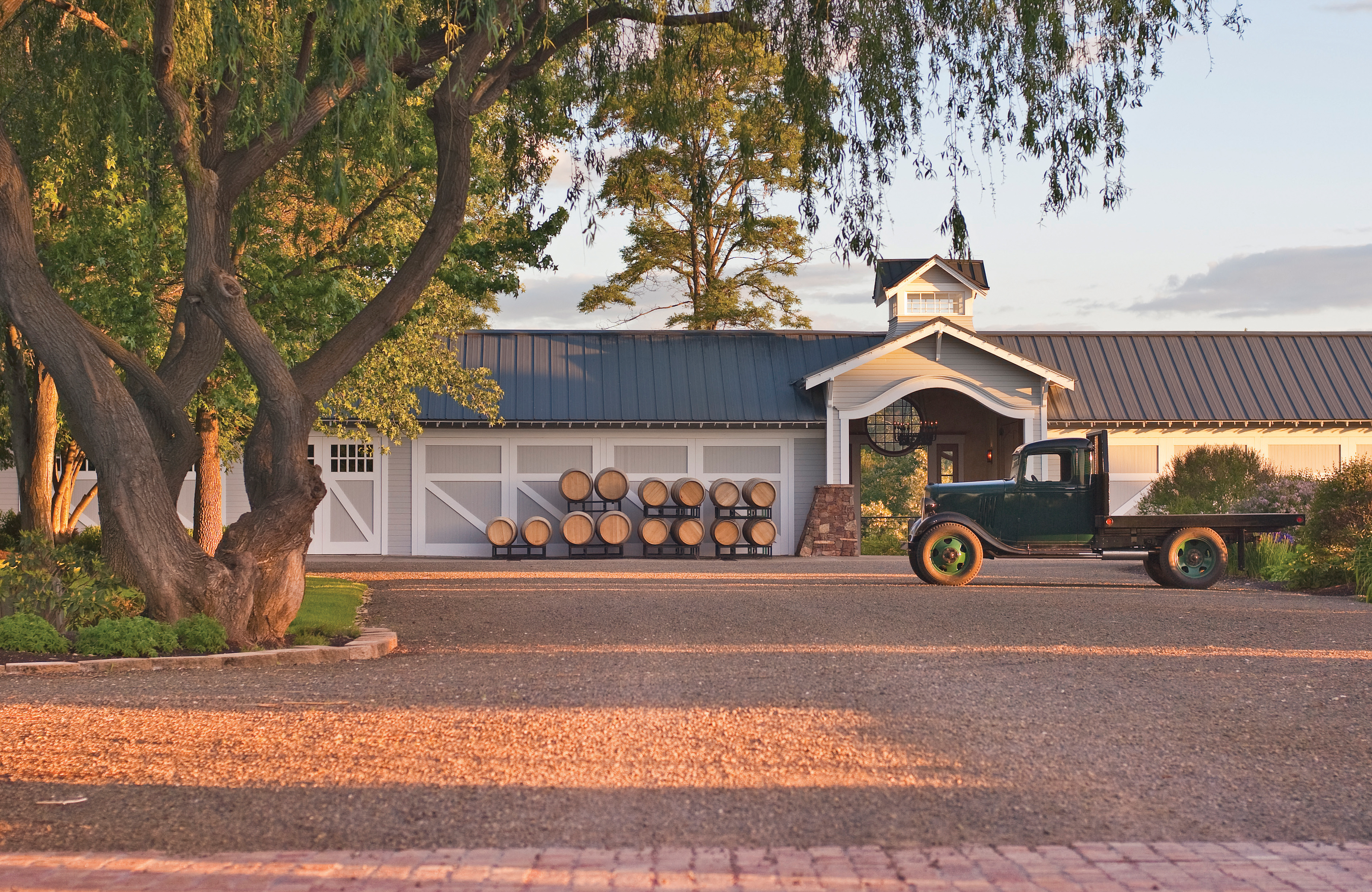
11 Mar Western Landmark: The Inn at Abeja
Years ago, I was lured to Walla Walla, Washington, by its emerging national profile as a worthy wine region. It was a fine day trekking through vineyards with visionary producers and tasting mostly reds at L’Ecole No. 41, Pepper Bridge Winery, Seven Hills Winery, Dunham Cellars, and Abeja. The Inn at Abeja found room for me that night. And, turns out, it was no ordinary room at no ordinary inn.
I stayed in the Bunk House — a chintz-and-checks trimmed country cottage with a kitchenette and porch overlooking a spacious lawn and gardens. Soaking away vineyard dirt in a deep clawfoot tub, evocative of a bygone era, I had questions.
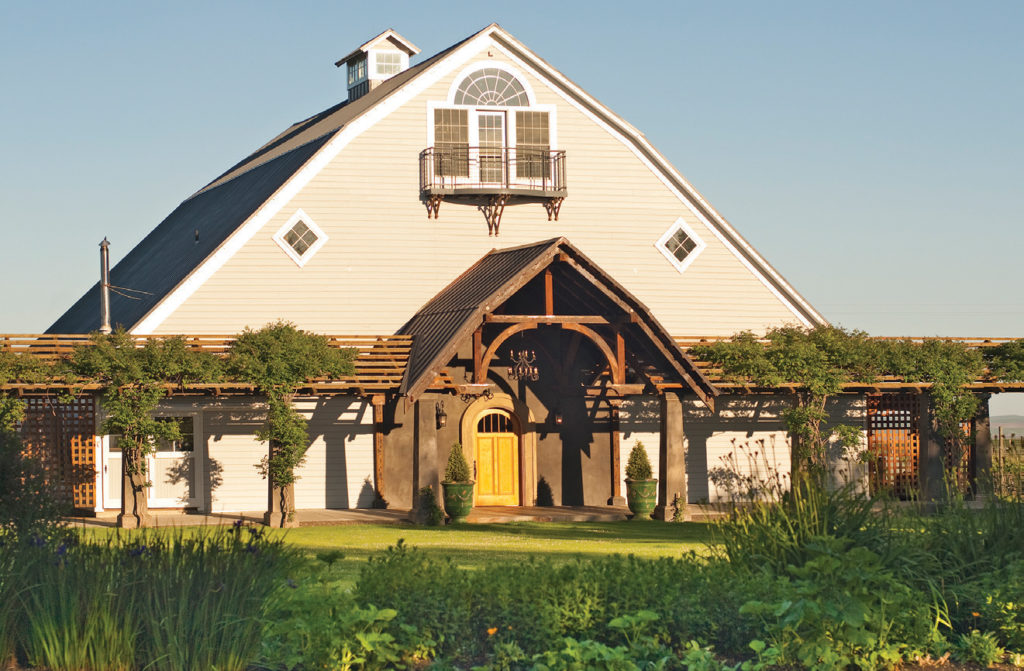
The Big Barn housed Abeja’s winemaking operations for a few decades. Once the new winery (located on the west side of the property) opens this year, the barn will become a center for events and guest activities.
The next morning, in a converted barn warmed by a snapping fire, the staff had readied a two-course breakfast (homemade marionberry crisp and eggs benedict) — and some answers. Yes, real farmhands once bunked in the Bunk House. The gray-and-white-sided barns, stables, and other outbuildings once housed heavy farm equipment for wheat harvesting. Chickens stayed cooped up in the Chicken Coop suite; hay was hoisted into the Hayloft Suite. And Ken and Ginger Harrison, who preserved this early 20th-century Western frontier farmstead by creating an exclusive luxury inn and winery, made the handsome Farmhouse their 21st-century home.
“I love old houses,” Ginger says. “And I knew when we first saw it [in 2000], that this would be our home away from Portland.”
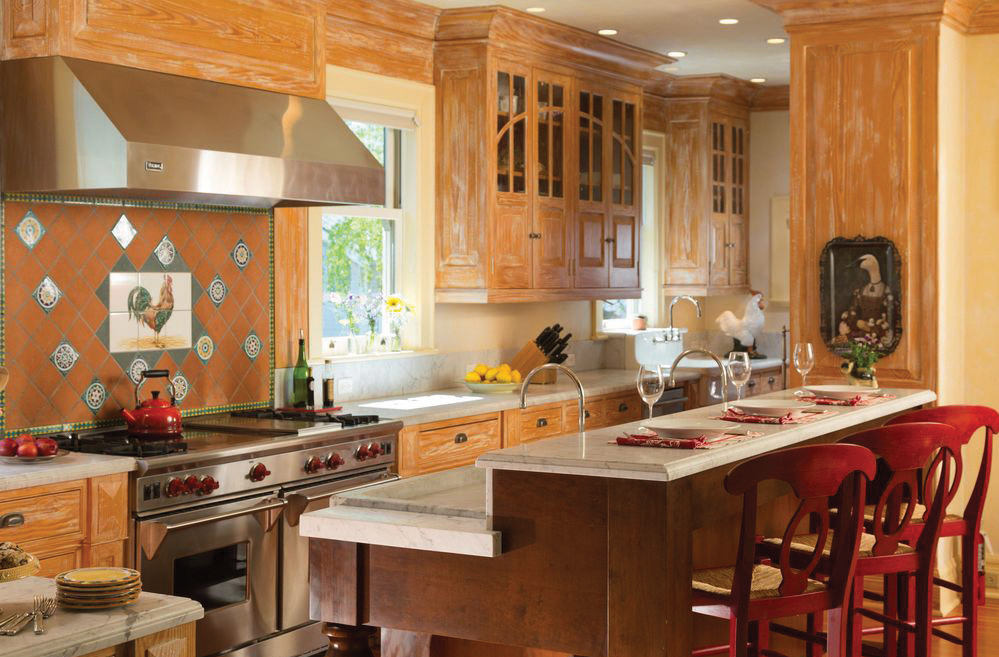
Guests staying in the Farmhouse are welcome to cook in the spacious kitchen. Families frequently book the entire Farmhouse and hire a private chef to prepare holiday or special-event meals, which are served in the dining room.
Abeja honors the decades that the pioneering Kibler family, its original owners, spent farming Walla Walla’s famed wheat. The Harrisons teamed up with a skilled local builder and talented carpenters. They matched original millwork, refinished salvaged doors, recycled hardwood floorboards, and conserved as much original glass as possible. Details mattered. Early photographs helped them get it right.
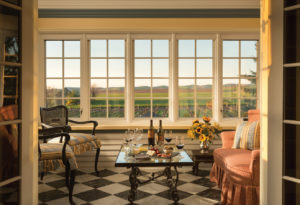
A small, inviting sitting area on the second floor of the Farmhouse is just the spot for a grand view of Abeja’s syrah vineyard and some of Walla Walla’s famous wheat fields.
But Abeja sings because of Ginger’s fearless collecting, shrewd eye, and skilled editing. Favoring primary colors — fire-engine red, robin’s egg blue, and any splash of yellow — she shopped in catalogs, at estate sales, when traveling abroad, and regularly in southeast Portland’s Sellwood antique shops. Each of the dozen cottages, suites, and rooms — designed, decorated, and furnished individually — emerged with a personality. Artifacts, replicas, antiques, crafts, and art blend: a carved bird on a headboard, a little fine china teapot adorned with a bee (abeja is Spanish for bee), simple twig wreaths, and painted wooden coat pegs. That long, skinny table in the breakfast barn? An Irish mourning table (originally used for just what you are imagining).
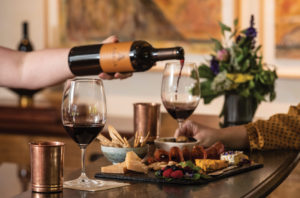
A guided tasting of red and white Abeja wines is a highlight for guests.
Meanwhile, the Harrisons acquired more vineyard land as the regional industry developed in leaps, with critics and consumers giving their wines lots of love. Upon arrival, Abeja guests are greeted with a glass of Beekeeper’s Blend and invited to relax in a rocking chair or on the lawn in Adirondack chairs. They can request private tastings and have the opportunity to join the waiting list to acquire limited release wines not available elsewhere.
On a recent visit, I sat down with Abeja’s winemaking team — husband and wife Daniel Wampfler and Amy Alvarez-Wampfler. They supervised the planting of the newest estate vineyard, Weyekin (a Nez Perce word for spirit powers). “It’s cabernet sauvignon, merlot, cabernet franc, and chardonnay. See that rise?” Dan points out a plump golden hill in the foreground of the Blue Mountains. “And we will open a new winery building this summer. So we will have more workspace, and the big barn can be used for more guest activities.”
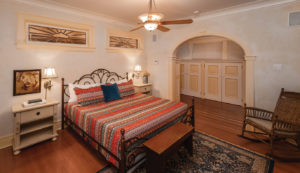
Named for this region of the Northwest, the Palouse Room on the first floor of the Farmhouse features period windows, lots of storage space, and an oversized soaking tub.
The Harrisons recently decided to step back from active property involvement, and they opened the Farmhouse to guests, a splendid home away from home for family celebrations (five bedrooms and an enviably outfitted kitchen). Walking from one spacious high-ceilinged room to the next, I smile at all of Ginger’s touches: a small bundle of postmarked letters tucked into a secretary desk (she loves handwritten correspondence), library stairs to reach that copy of Lonesome Dove on a top-shelf (she loves bookcases), an oversized marble kitchen sink found in Italy, chickens in glass, pottery, tiles, and tiny little bees in the bathroom’s ceramic trim.
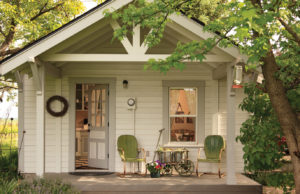
The Bunk House, a cottage that once housed farmhands, includes a kitchenette. It has become a favorite for couples who like the option of casual home-away-from-home cooking and sharing a bottle of wine on the front porch at sunset.
I return regularly to Walla Walla, a town that has earned the high-wattage spotlight of a wine destination, where new mixes with tradition: Valdemar Estates, a venerable Spanish producer, put down new roots close by; two former U.S. Air Force pilots landed down the road from Abeja to establish Aluvé Winery; and once a planing mill, the Whitehouse-Crawford now houses a restaurant serving fine local food (don’t miss the fried Walla Walla Sweet Onions). Tucked under a handmade quilt back at Abeja, I muse at how seamlessly it all comes together.





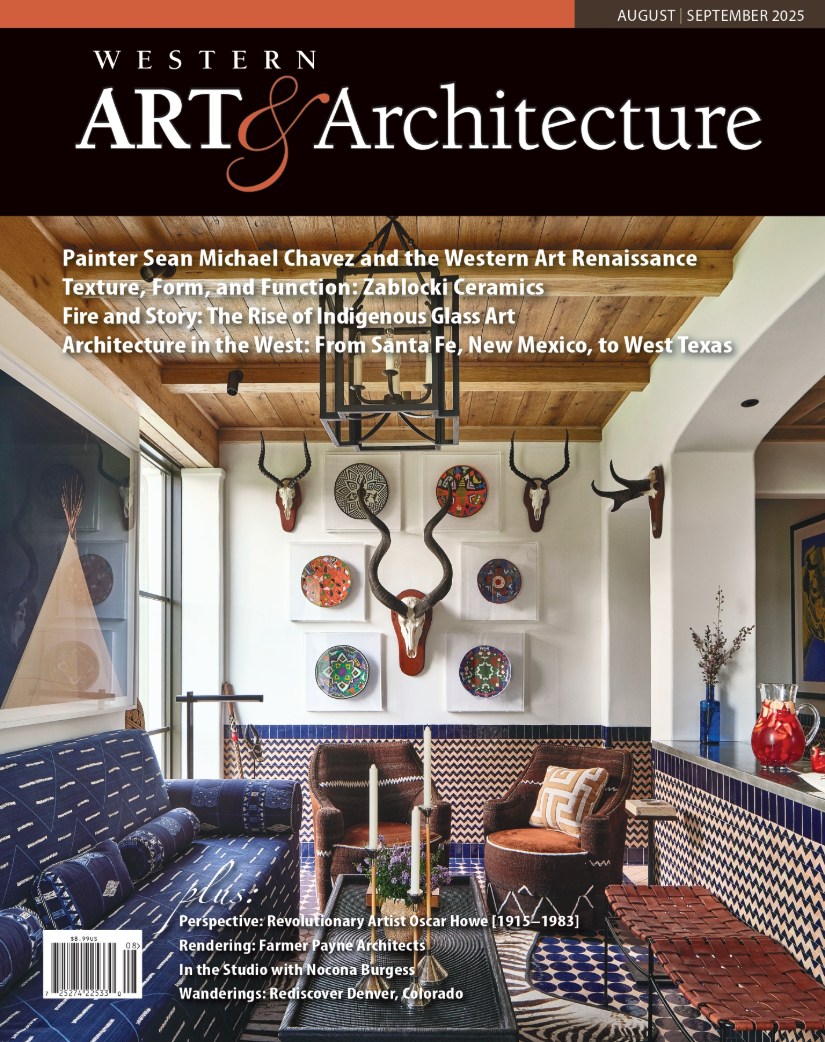
No Comments